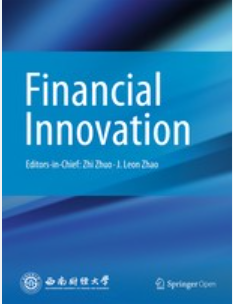基于虹膜识别技术的金融科技的净值分析
IF 7.2
1区 经济学
Q1 BUSINESS, FINANCE
引用次数: 0
摘要
基于虹膜识别技术(IRT)的身份验证是一种生物识别金融技术(FinTech)应用,用于自动识别和验证用户。基于 IRT 的金融科技除了是一项有争议的技术,存在各种促进因素和抑制因素之外,其采用还受到环境因素的影响,如客户认知、已部署的生物识别技术和金融交易环境。由于 IRT 具有争议性和情境属性,因此分析基于 IRT 的金融科技的接受度具有挑战性。本研究采用净价值框架来调查影响约旦自动取款机(ATM)中基于 IRT 的金融科技使用意向的显著积极和消极因素。本研究之所以具有现实意义,是因为相关文献中关于基于 IRT 的金融科技的研究十分匮乏;以往的研究大多采用纯粹的工程和技术方法。此外,尽管银行和其他金融机构对该金融科技进行了大量投资,但目标用户的采用率却微乎其微,目前约旦仅有 6% 的 ATM 交易支持 IRT。本研究采用了混合方法。在第一项定性研究中,就自动取款机中基于 IRT 的金融科技的好处和风险采访了 17 位约旦客户。内容分析确定了最重要的概念或主题。优点包括金融安全、便利和金融科技卫生,而担忧则包括性能、金融、隐私和物理风险。研究模型是在定性研究和理论基础上构建的,对 631 名拥有活跃 ATM 账户的约旦银行客户进行了调查,以验证研究模型。研究结果表明,基于 IRT 的金融科技在 ATM 中的使用与其感知价值成正比。按效果降序排列,金融安全、金融科技卫生和便利性对感知价值有积极影响。隐私、金融和物理风险对感知价值有负面影响,而性能风险则没有影响。本研究为信息系统中相对尚未开发的生物识别技术领域做出了贡献,具有重要的理论和实践意义。本文章由计算机程序翻译,如有差异,请以英文原文为准。
Net valence analysis of iris recognition technology-based FinTech
Iris recognition technology (IRT)-based authentication is a biometric financial technology (FinTech) application used to automate user recognition and verification. In addition to being a controversial technology with various facilitators and inhibitors, the adoption of IRT-based FinTech is driven by contextual factors, such as customer perceptions, deployed biometric technology, and financial transaction settings. Due to its controversial and contextual properties, analyzing IRT-based FinTech acceptance is challenging. This study uses a net valence framework to investigate the salient positive and negative factors influencing the intention to use IRT-based FinTech in automated teller machines (ATMs) in Jordan. This study is pertinent because there is a dearth of research on IRT-based FinTech in the relevant literature; most previous research has taken purely engineering and technical approaches. Furthermore, despite considerable investments by banks and other financial institutions in this FinTech, target user adoption is minimal, and only 6% of Jordan’s ATM transactions are currently IRT-enabled. This study employs mixed methods. In the first qualitative study, 17 Jordanian customers were interviewed regarding the benefits and risks of IRT-based FinTech in ATMs. Content analyses determined the most important concepts or themes. The advantages include financial security, convenience, and FinTech-enabled hygiene, whereas the concerns include performance, financial, privacy, and physical risks. The research model is constructed based on the qualitative study and theoretical underpinnings, wherein 631 Jordanian bank customers with active ATM accounts were surveyed to validate the research model. The findings indicate that IRT-based FinTech usage in ATMs is proportional to its perceived value. In descending order of effect, financial security, FinTech-enabled hygiene, and convenience benefits positively impact perceived value. Privacy, financial, and physical risks have negative impacts on perceived value, whereas performance risk has no effect. This study contributes to the relatively untapped domain of biometric technology in information systems, with important theoretical and practical implications.
求助全文
通过发布文献求助,成功后即可免费获取论文全文。
去求助
来源期刊

Financial Innovation
Economics, Econometrics and Finance-Finance
CiteScore
11.40
自引率
11.90%
发文量
95
审稿时长
5 weeks
期刊介绍:
Financial Innovation (FIN), a Springer OA journal sponsored by Southwestern University of Finance and Economics, serves as a global academic platform for sharing research findings in all aspects of financial innovation during the electronic business era. It facilitates interactions among researchers, policymakers, and practitioners, focusing on new financial instruments, technologies, markets, and institutions. Emphasizing emerging financial products enabled by disruptive technologies, FIN publishes high-quality academic and practical papers. The journal is peer-reviewed, indexed in SSCI, Scopus, Google Scholar, CNKI, CQVIP, and more.
 求助内容:
求助内容: 应助结果提醒方式:
应助结果提醒方式:


